The best hybrid bikes for a range of budgets
The best hybrid bikes are some of the most practical and versatile bicycles on the market.
Sometimes known as fitness bikes or flat-bar road bikes, hybrid bicycles are designed specifically for people new to cycling and recreational riders.
They’re also ideal for commuting and great for less strenuous leisure riding.
To tackle most types of riding, hybrid bikes tend to have chunky semi-slick tyres, ample mounts for accessories such as mudguards, and a relaxed upright riding position.
This means you can head out on your hybrid bike confident it will be up to the job with most terrain or weather conditions.
Hybrid bikes are also a popular electric bike option and our best electric hybrid bikes page gives you the pick of those we’ve reviewed.
All the hybrid bikes in this list have been rated and reviewed by BikeRadar’s team of expert testers, who also review the best road bikes, gravel bikes and mountain bikes.
We also have a guide to the best cheap hybrid bikes if you’re after a budget option.
You can jump to our buyer’s guide to hybrid bikes at the end of this article to learn more about what makes the best hybrid bikes.
The best hybrid bikes in 2024, as rated by our expert testers
Canyon Commuter 7
- £1,749 / €1,699 / AU$2,649 as tested
- Pros: One of the best-thought-out commuter bikes; dynamo lights and mudguard
- Cons: No mudguard safety-release
The Canyon Commuter 7 comes with everything you would want from a hybrid bike.
The bike is fully kitted out with mudguards, a rack, a bell and lights powered by a Shimano dynamo hub, so you’ll never get caught out after dark.
Internal cabling keeps cables and tubing out of harm’s way – a smart choice for a bike that will likely be ridden in the winter. The Gates belt drive also reduces the need for maintenance.
The bike’s handling is ideal for commuting and the 11-speed rear hub has a wide gear range.
The Commuter 7 weighs 13kg and while some riders might like a lighter build, it’s not excessively heavy.
Cannondale Treadwell EQ
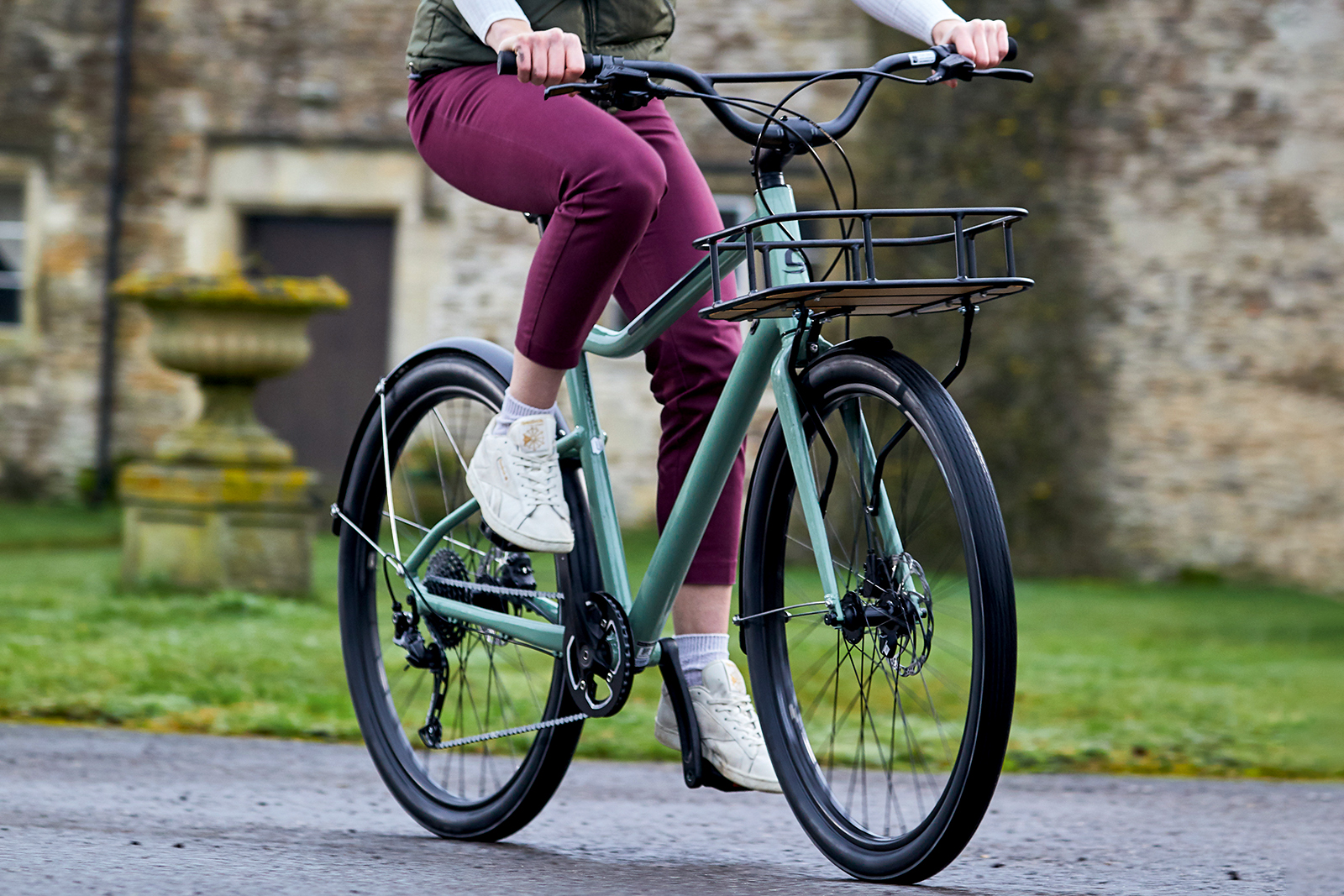
- £800 / $950 / €900 / AU$1,500 at tested
- Pros: Front rack will carry up to 10kg; all-weather ready; fun ride
- Cons: Might lack all-round appeal for some
Cannondale’s Treadwell is a comfortable and practical way to get around. It’s ideal for running errands such as shopping trips thanks to its front rack, which will accept up to 10kg.
Pannier rack mounts are integrated neatly into the bike’s seat clamp, should you need to carry more.
This range-topping EQ model is now an older bike, but the 2021 model is almost identical. The simple 1×9 Shimano transmission is ideal for commuter miles and the Tektro hydraulic discs are powerful.
The fat 47mm wide Maxxis DTR-1 tyres keep the ride comfortable and the mudguards enclose them, which will keep the worst of the weather from splashing back at you.
It’s not one to be rushed, but the Treadwell does offer a genuinely fun riding experience.
Marin Fairfax 2
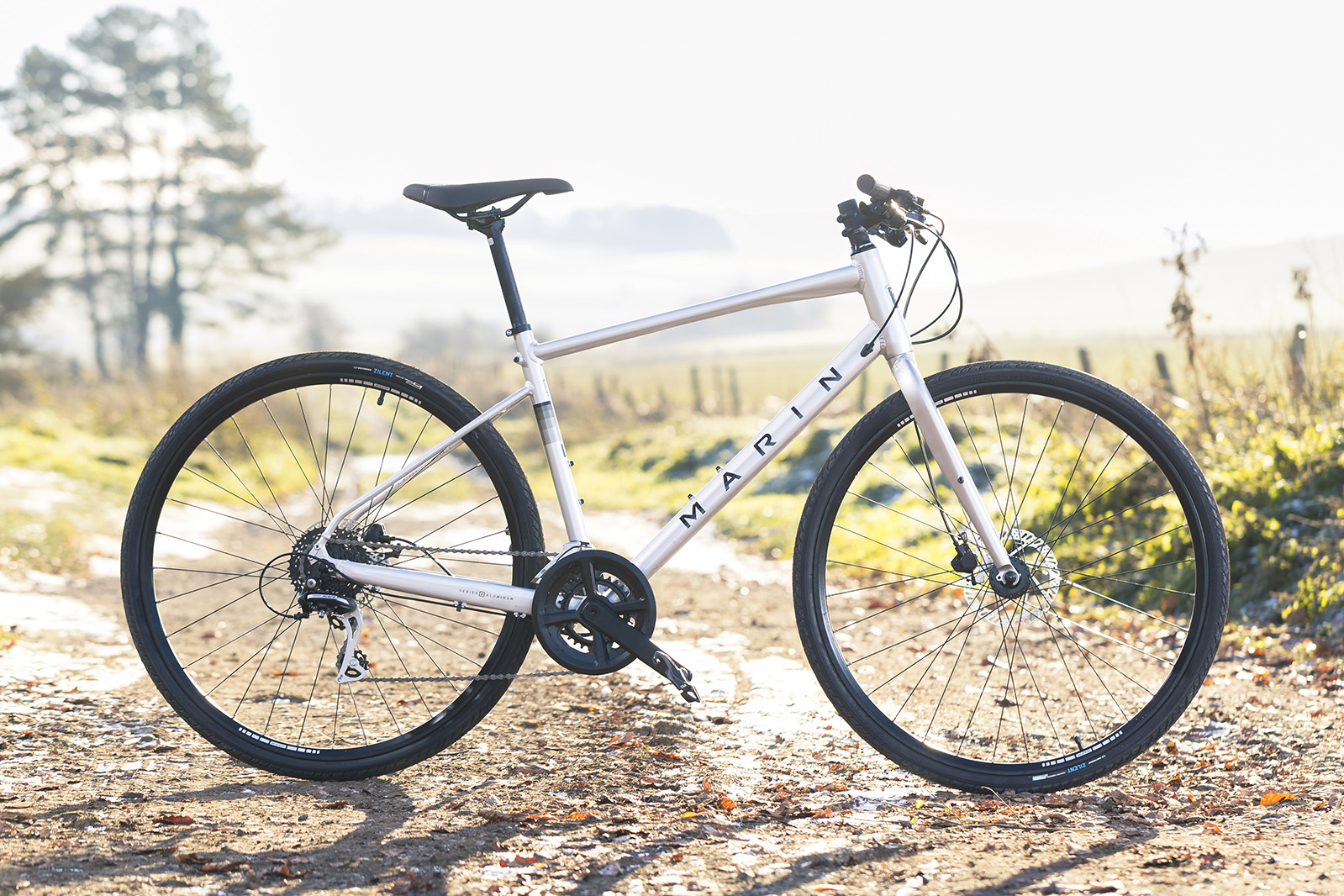
- £665 / $699 / €779 / AU$999 as tested
- Pros: Lovely ride; braking; gear range; bosses to mount accessories
- Cons: Schrader valves, but this is a personal preference
The Marin Fairfax 2 comes well-specced for the price with a wide gear range, 35mm-wide tyres and really good hydraulic disc brakes – impressive for a budget bike. There’s also a wide range of accessory mounts, so you can easily fit mudguards, and front and rear racks.
You get 16 gears and they’re oriented towards the lower end of the range with a 46/30t chainset in place of the more usual 50/34t and an 11-34t cassette, so hills are a cinch. We really enjoyed the comfortable ride on the wide tyres.
Ribble Hybrid AL Leisure
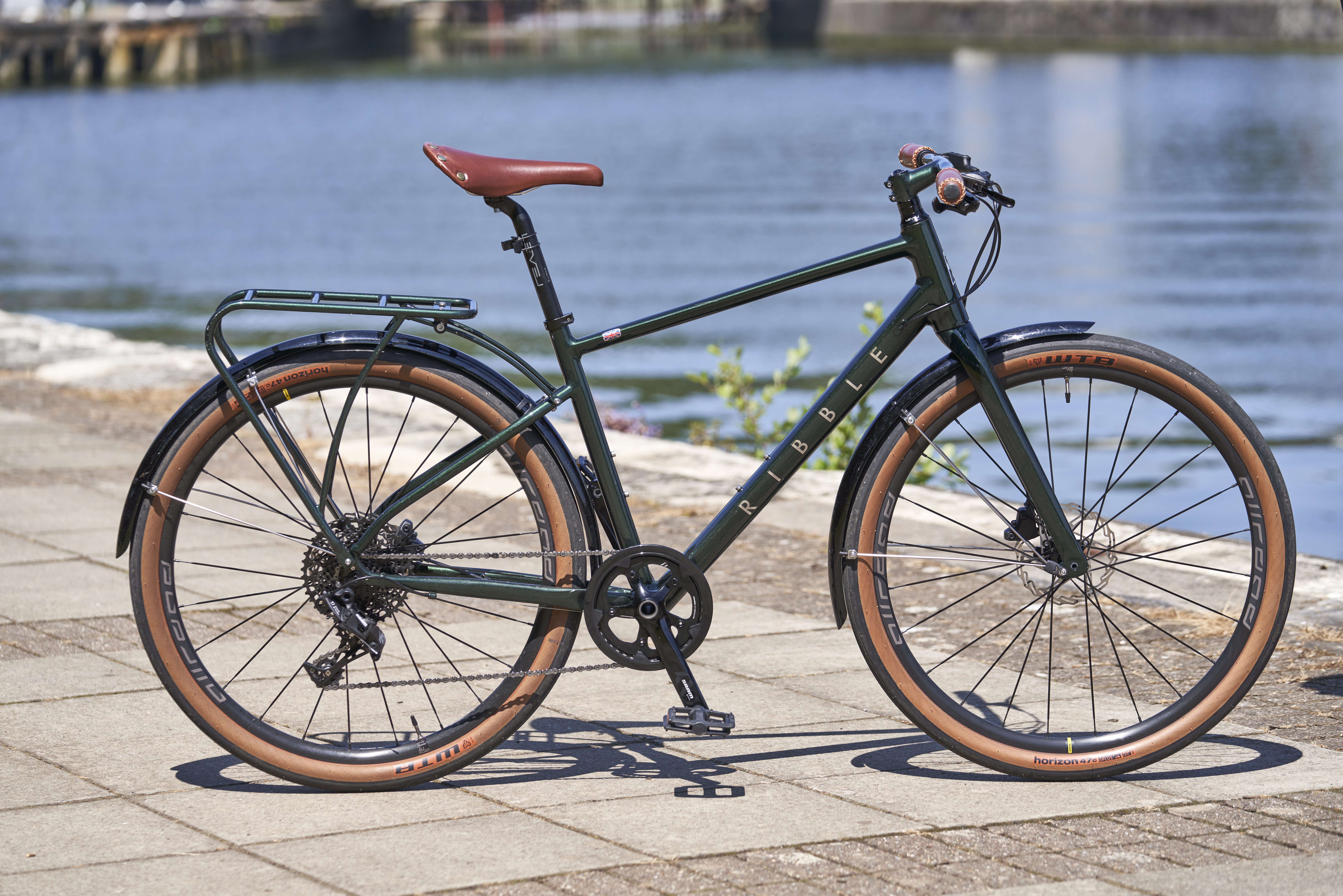
- £1,199 / $1,350 / €1,280 / AU$1,950 as tested
- Pros: Comfortable and confidence-inspiring; quality spec including mudguards; looks
- Cons: WTB Horizon tyres not the fastest-rolling; grips are slippery when wet
BikeRadar’s managing editor, Gary Walker, rode the Ribble Hybrid AL Leisure as his long-term test bike, and the pair had a riotous time together.
The bike comes with an 11-speed 1x drivetrain, hydraulic disc brakes and 47mm tyres on 650b wheels. The deep British Racing Green finish and faux leather saddle and grips make for smart aesthetics.
Gary’s testing saw him combine daily commuting with longer road rides and some light gravel, and he got on famously with the bike, awarding it a score of 4.5 stars.
Specialized Sirrus X 3.0
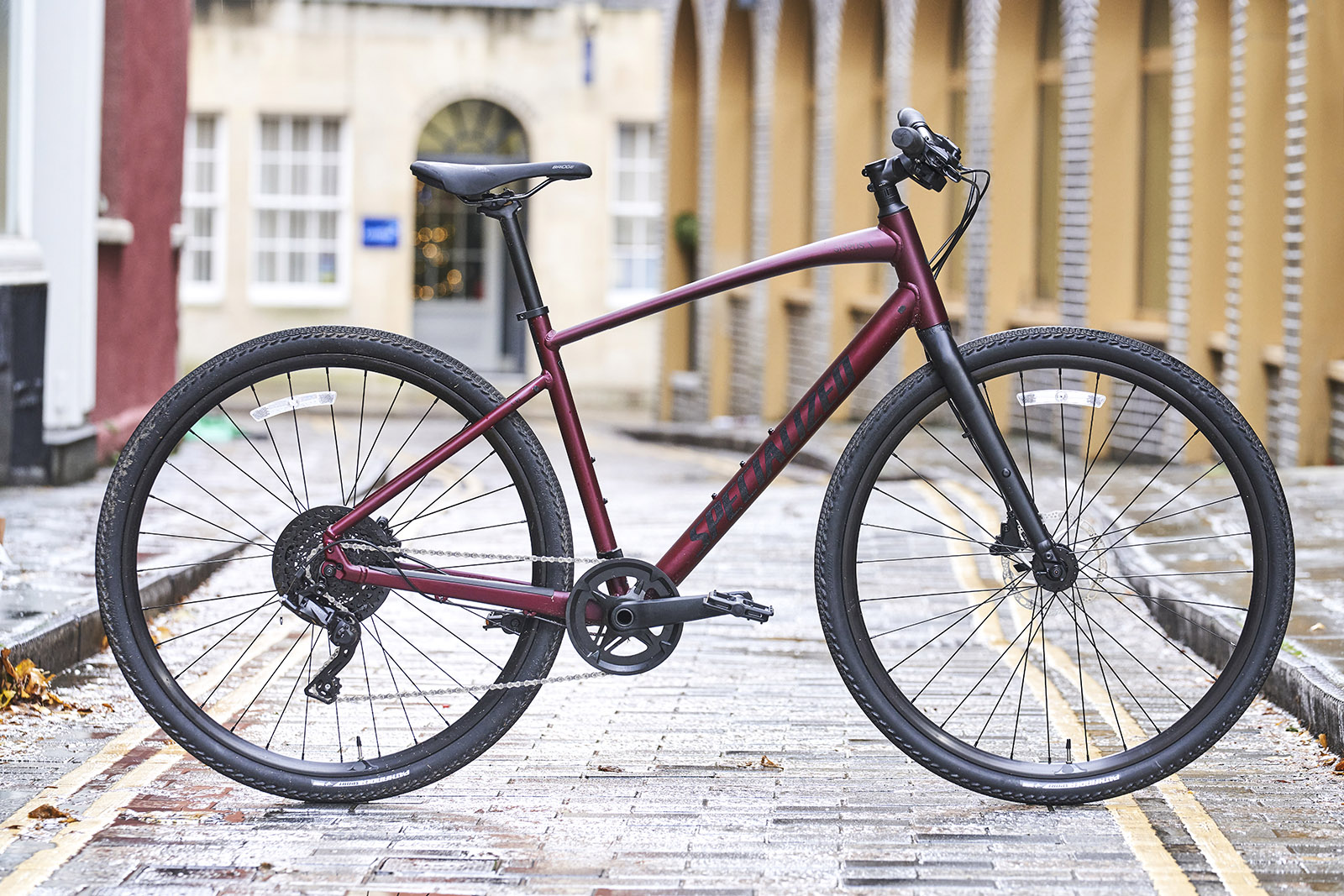
- £769 / $1,200 / €1,100 / AU$1,400 as tested
- Pros: Good price; practical; groovy reflective graphics
- Cons: 1x gear range features big-ish gear jumps
Our tester said there was little to fault about the Specialized Sirrus X 3.0 – a flat-bar all-rounder, with good comfort and well-chosen components throughout.
The 1x drivetrain is easy to operate and the braking exceptionally good.
The bike is also suitable for light gravel dalliances.
Giant Escape 1 Disc
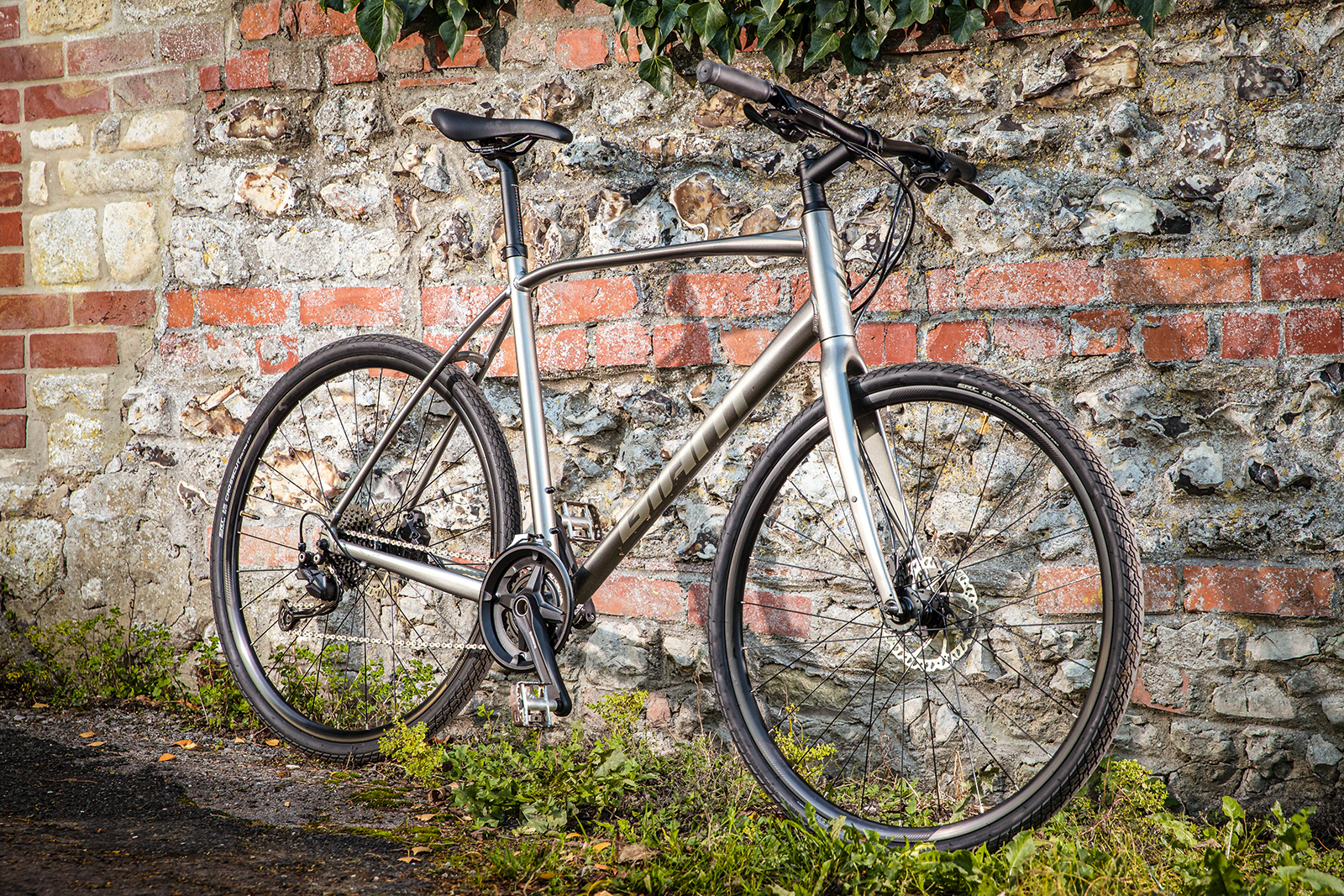
- £699 / $800 as tested
- Pros: Frame and fork; ride position; comfort
- Cons: Tyres are slow on tarmac
The Escape 1 from Giant is a great choice for those who want to be comfortable while commuting, or spend a fair amount of time away from smooth roads.
That’s because beneath the impressive aluminium frame and full carbon fork of the Escape 1 is a set of tubeless-ready alloy wheels with tough 38mm urban tubeless tyres.
All that rubber means you’ll make light work of towpaths and gravelly bike routes but will pay for it in outright speed when on the road.
Its geometry places you in such a way that you’re very aware of the traffic around you, but it’s not upright enough to detract from the occasional sprinting effort.
Its mix-and-match Shimano gearing will give you every ratio you require, and stopping power is handled by well-modulated Tektro hydraulic disc brakes.
Marin Presidio 1

- £465 / $499 / €599 / AU$899 as tested
- Pros: Good looks; rides well; value for money
- Cons: Squishy saddle
The Marin Presidio 1 is a commuter that looks good, rides well and offers exceptional value.
The finish of the aluminium frame is excellent for the price, and you’ll have no problems with fitting a rack or proper mudguards.
Marin has even managed to spec hydraulic disc brakes, so stopping power and control is impressive.
The fairly upright ride position, combined with a short stem, makes the Marin a sharp steer and an entertaining bike to ride.
Ridgeback Expedition
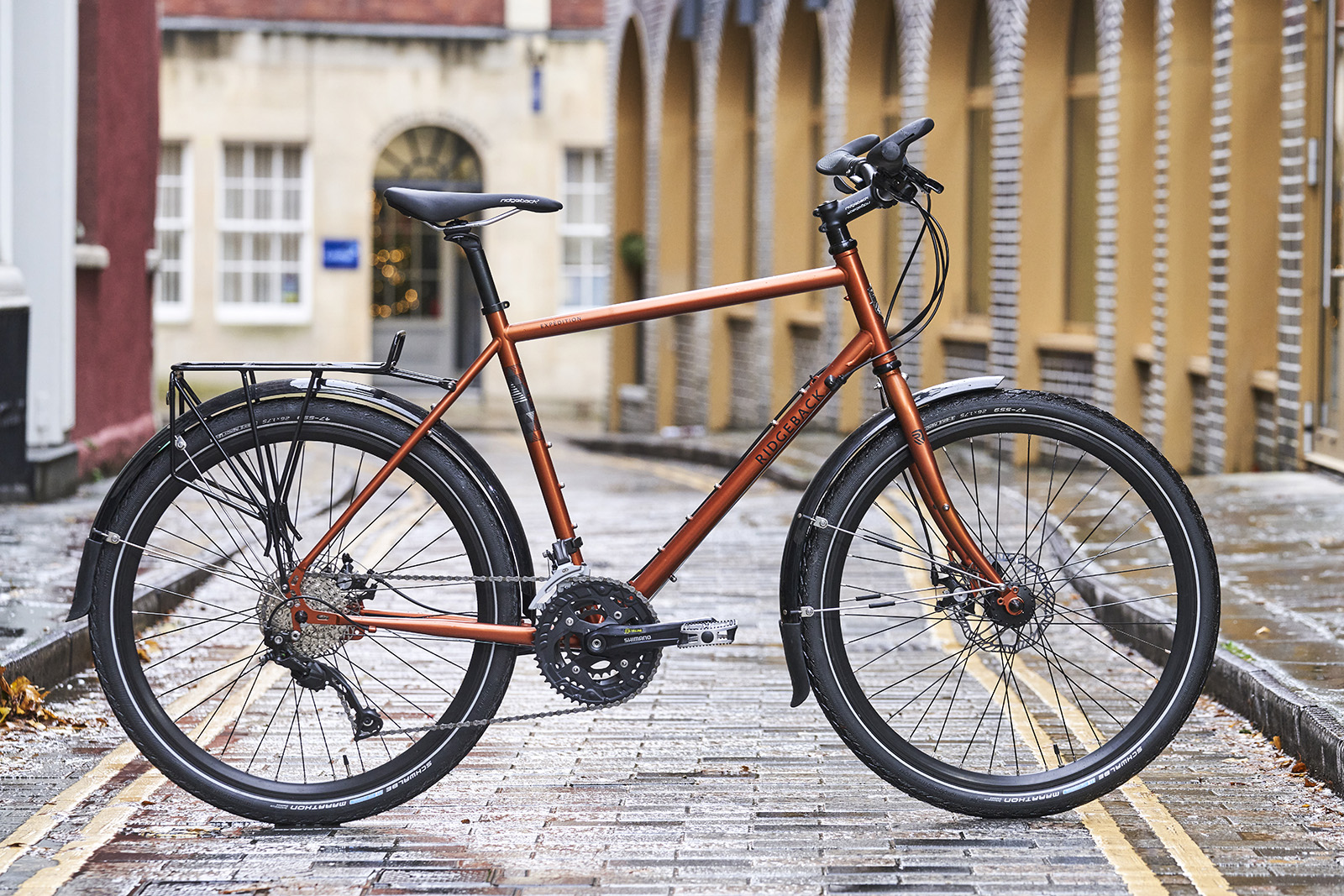
- £1,350 as tested
- Pros: Wide gear range; tough tyres
- Cons: Lacklustre braking performance; heavy
Rolling on rarely seen 26in wheels, the Ridgeback Expedition is a great hardy commuter, particularly if you also want a do-it-all bike for longer rides or tours.
It is quite heavy, and the mechanical disc brakes lack the outright power of hydraulic brakes, but the full suite of accessories and comfort make up for these shortcomings.
Trek Dual Sport 2 Equipped Gen 5
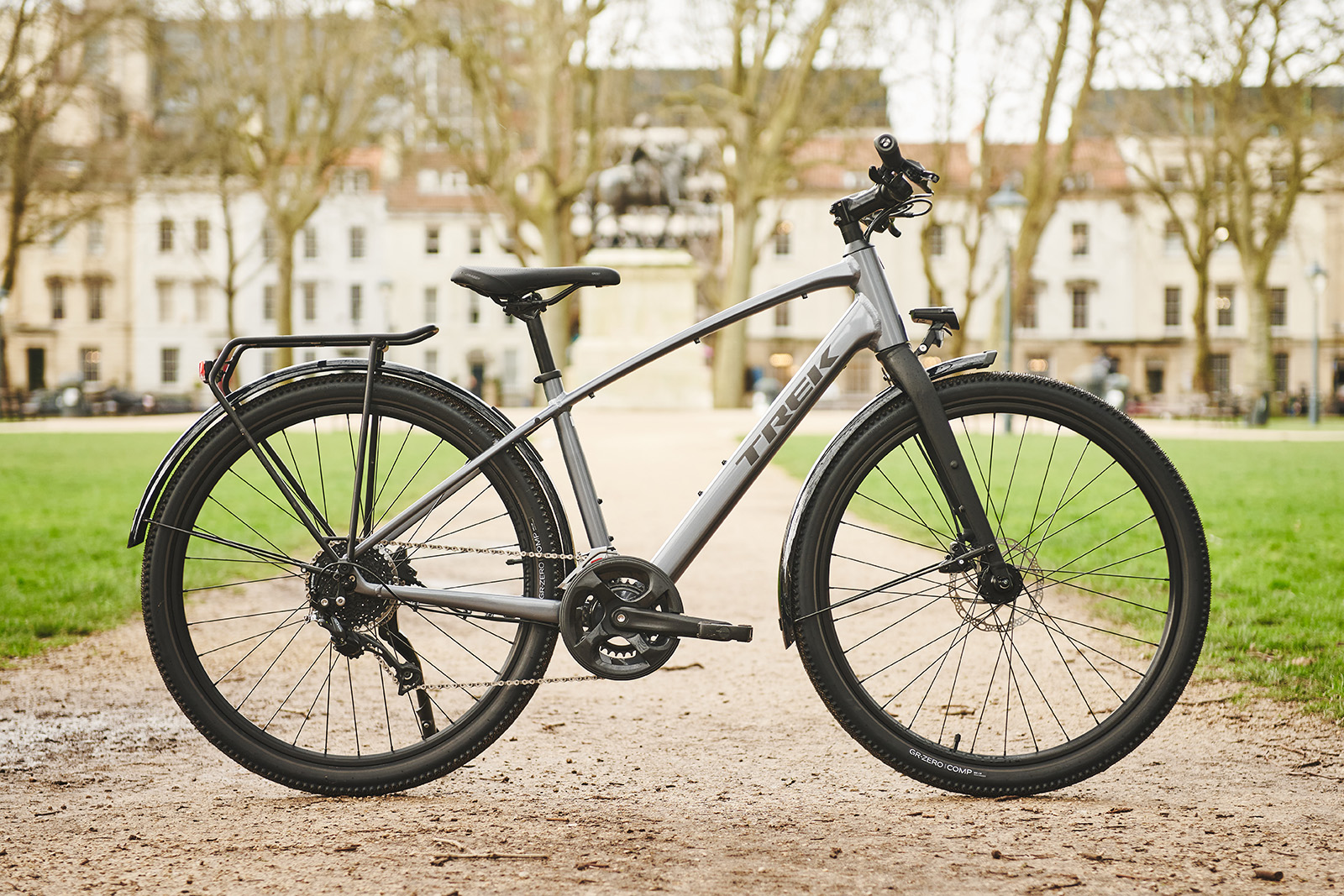
- £925 / €999 as tested
- Pros: Comfortable; fitted with mudguards, lights and a rack
- Cons: Heavy
This Dual Sport 2 comes with various touring extras, such as a rack with a 25kg carrying capacity, which may come in handy on your daily commute.
These accessories add to the weight of the bike, which becomes apparent on steeper inclines. A 46/30 chainset and 11-36 cassette mean hills aren’t out of the question, though the weight of the bike doesn’t inspire out-of-the-saddle efforts.
Shimano’s 9-speed Altus shifters and derailleur offer a crisp and accurate gear change, while the Tektro R280 hydraulic disc brakes give the Dual Sport 2 more than enough stopping power.
50mm-wide tyres make the bike seriously comfortable on road and offer gravel riding possibilities.
Trek FX 3 Disc Equipped review
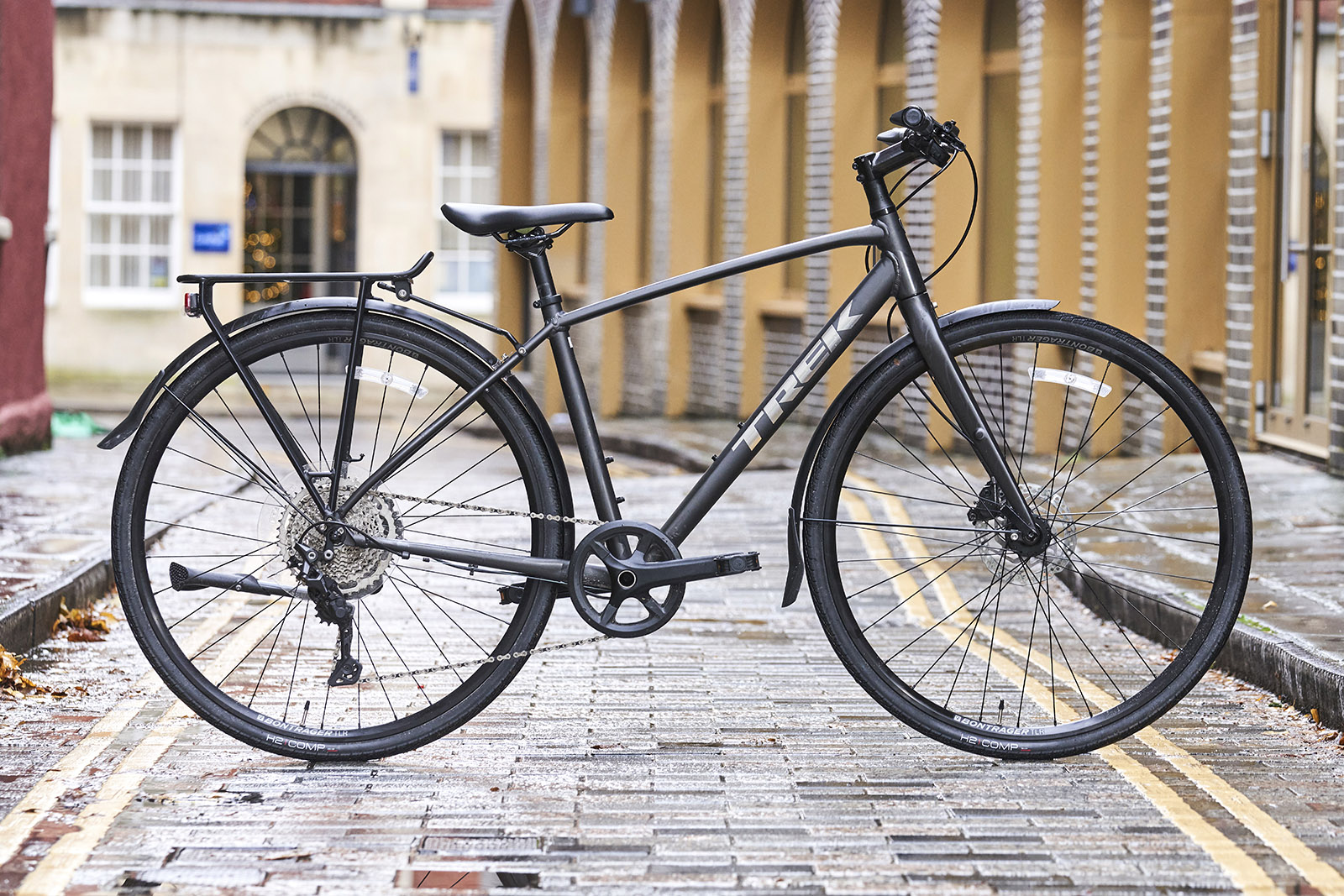
- £1,100 / €1,229 as tested
- Pros: Rack and mudguards included as stock; comfortable contact points
- Cons: Middling lights; fewer accessory mounts than the competition
The Trek FX 3 Equipped includes a rack, mudguards, a kickstand and lights as standard, potentially saving cash versus buying these separately.
The wide-range 1x drivetrain, excellent contact points and powerful Shimano brakes all perform well, too.
The bike’s relatively sprightly ride also means it won’t be a chore to ride on the weekend.
Also consider…
These bikes didn’t quite make the 4-star rating that qualifies them for our best lists, but they’re still a good choice that might suit your needs.
Genesis Croix de Fer 10 Flat Bar

- £1,100 as tested
- Pros: Comfortable ride; confident on a wide range of terrain
- Cons: Gravel tyres are slower on the road
The Genesis Croix de Fer was one of the first road bikes to be designed to go beyond the tarmac – so early an adopter that it wasn’t even called a gravel bike at the time.
The flat-bar version of the Croix de Fer is a great bike to ride and is particularly versatile, but the steel frame makes it heavier than most of its competitors.
The upside of the Genesis’ butted-steel chassis is the flat-bar Croix de Fer has a lively feel, especially when riding on rough terrain.
Change the stock tyres for some fast road slicks and this Genesis would make a fine urban commuter.
Orbea Carpe 40
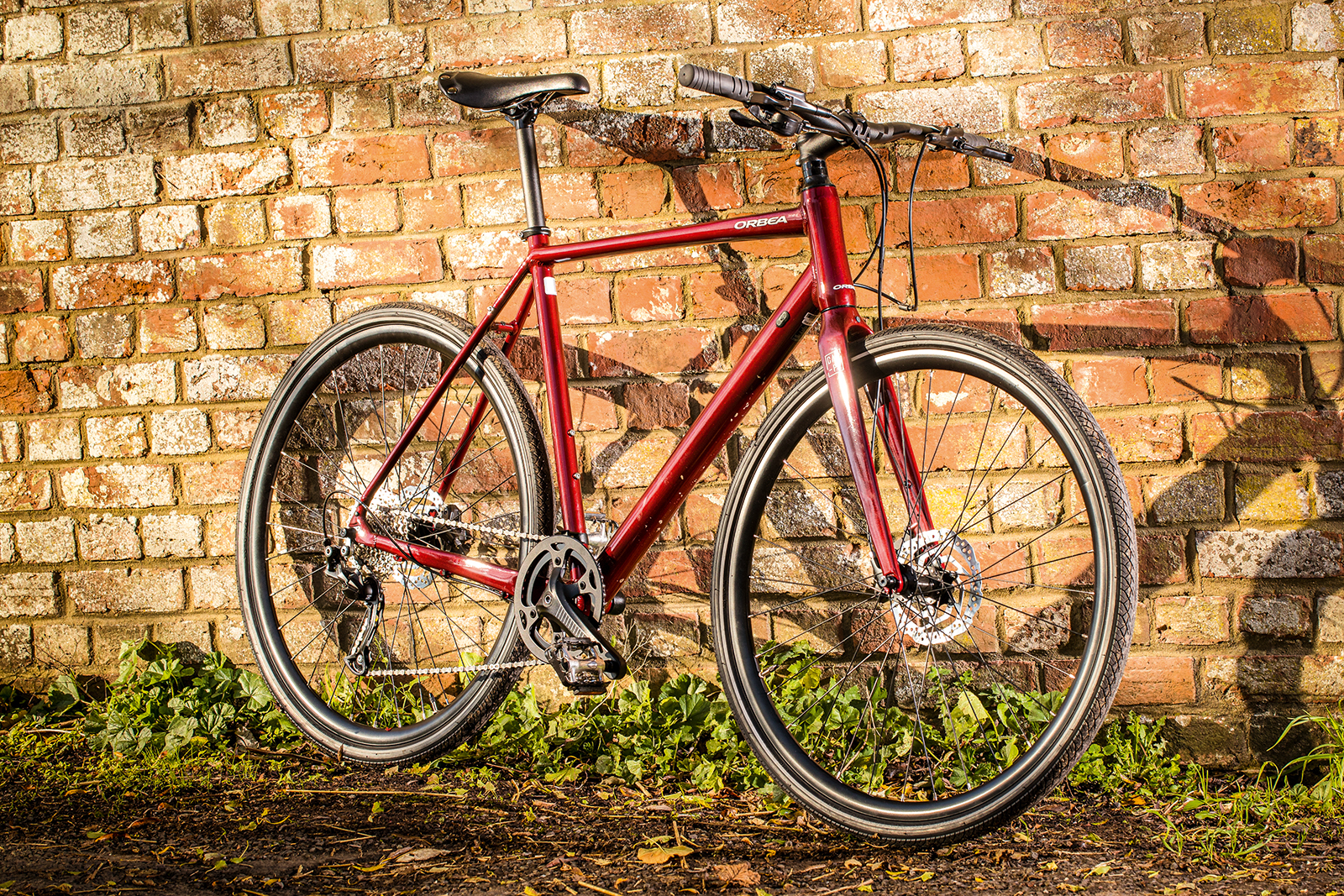
- £519 as tested
- Pros: Fun, fixie-inspired geometry; hydraulic disc brakes
- Cons: Flex in crank arms; slow tyres
The Carpe 40 is almost the ideal commuter, but it’s one that is hampered slightly by some of its component choices.
The frame features a short wheelbase and aggressive angles similar to those used on many fixies, making it especially fun to ride. It stops well too, thanks to Shimano hydraulic discs.
The single chainring and 7-speed rear cassette offer ideal gearing for shorter commutes, but the flexy Orbea-branded chainset is disappointing.
The standard-fit 38mm Kenda tyres are weighty, with unforgivingly stiff sidewalls and steel beads. Swapping these for some quality 35c rubber transformed this bike into what it was supposed to be.
Ridgeback Speed
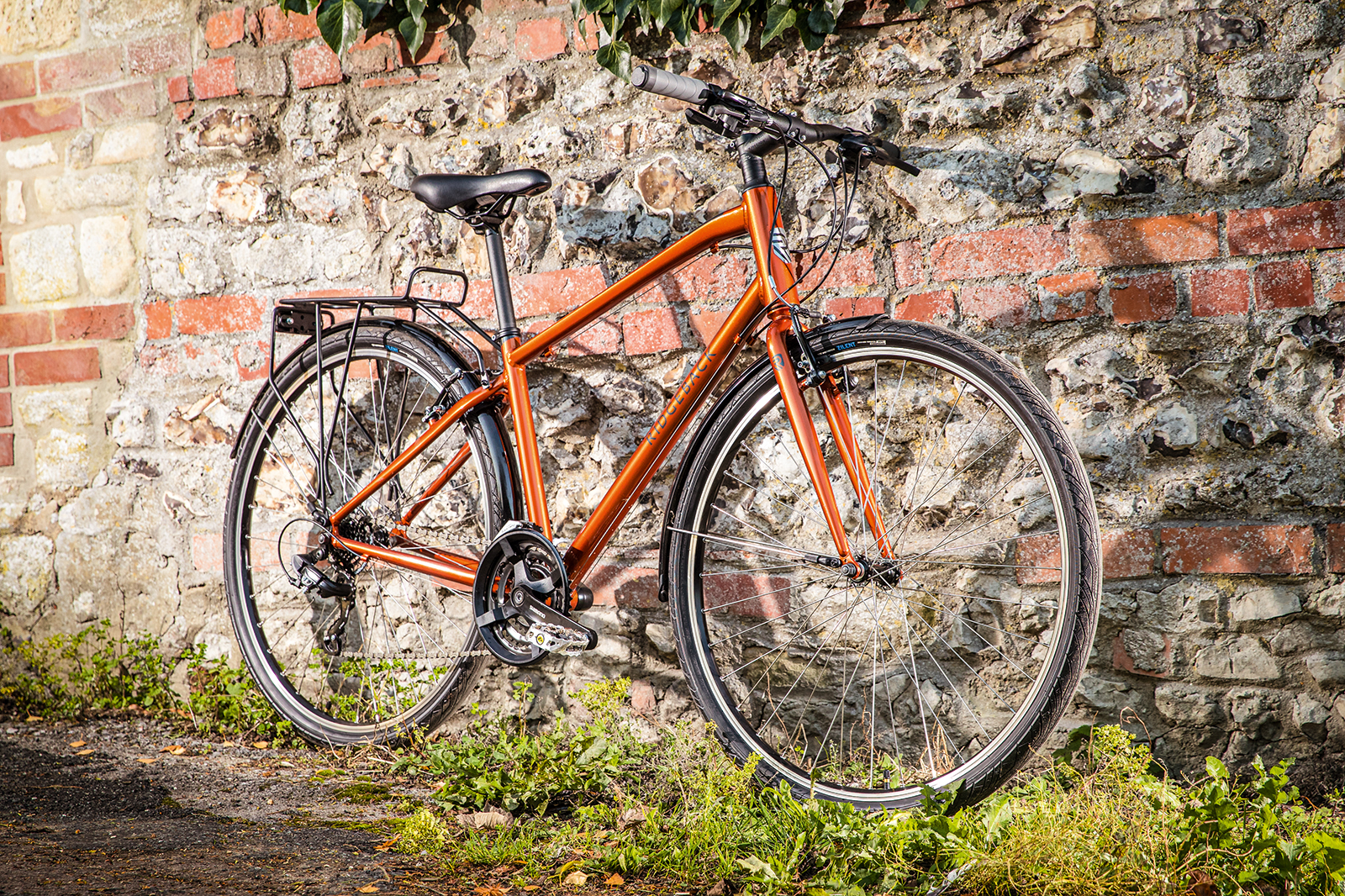
- £500 as tested
- Pros: Great spec for the price; fun and engaging handling
- Cons: Mudguard rubbing; drivetrain noise
It’s difficult to find bikes at this price that arrive equipped with full mudguards, a rear rack and a full Shimano drivetrain. To make that happen, Ridgeback has specced the Speed with V-brakes rather than discs – they’re fine, but won’t match the performance of hydraulic discs, particularly in the wet.
As smooth as it is, the triple chainring at the front and seven gears at the cassette can be considered overkill for what this bike is likely to be used for, and it’s also something of a noisy setup.
The 42mm Vee tyres roll surprisingly well, but their heft can be felt on the hills and they run close enough to occasionally rub on the mudguards.
You’ll need a spanner with you should you need to repair a puncture, but bolted axles are considerably more secure than quick-release items.
This is still a fun bike to ride though, and it looks good to boot.
Hybrid bike buyer’s guide | Everything you need to know about hybrid bikes
What is a hybrid bike?

A hybrid bike combines the best features from road and mountain bikes, enabling you to tackle most of the riding you’ll want to do.
This makes them ideal for beginners looking to get into riding or recreational riders wanting one bike to do it all with the minimum of fuss.
In general, hybrids are fitted with high-volume tyres to improve comfort and traction on varied surfaces. This also helps if you want to tackle rougher terrain such as canal paths and gravel tracks.
Mounts for mudguards, racks and other accessories mean you can prepare your hybrid for any eventuality, whether you plan to carry lots of luggage or ride whatever the weather.
Like a road bike, hybrids will enable you to get around quickly. However, they are typically fitted with durable components that are tough enough for commuting, city riding and the wear and tear of daily use.
Like a mountain bike, hybrids will have more relaxed geometry and flat handlebars, putting you in a comfortable and upright position on the bike. This can be particularly helpful for riding in traffic, affording you a good overview of what is going on around you.
While hybrids fitted with suspension forks (front) are available, we would generally shy away from them on cheaper models. The suspension tends to be low-end and adds significant weight, without major performance improvements.
An increasing number of hybrids are now fitted with disc brakes, which provide consistent stopping power in all conditions.

Hybrids are capable machines with various concessions to practicality and comfort that make them fuss-free bikes to live with.
If you’re a dab hand at mechanics or you’ve got an old bike lying around that you want to put to good use, our guide on how to transform your bike into a super commuter might be for you.
What types of hybrid bikes are available?
Hybrids all sit on a sliding scale between road and mountain bike. Where a certain model sits on that scale will define how well it copes with uneven off-road terrain and how fast you can travel on tarmac in the city.
If you will be riding on rougher terrain, then you will want to look for an option with larger tyres to provide additional cushioning. On higher-end models, you might even want to consider a suspension fork for that extra bit of comfort.
Hybrids designed for city riding will usually be fitted with slick road tyres and components that are much closer to a road bike, enabling you to get around quickly and efficiently.
Will my tyres puncture?

We hate to be the bearer of bad news, but no matter how puncture-resistant your tyres may claim to be, they will never be completely immune.
That said, hybrid bikes will generally be fitted with sturdy tyres that are pretty puncture-resistant. They are designed to reliably get you from A to B, day-in-day-out. So the likelihood is that you won’t have to worry about punctures at all.
If you do end up with a puncture, we have a complete guide on how to fix a puncture and how to pump up your bike tyre. It’s really not that difficult, we promise!
What gears do hybrid bikes have?

The vast majority of hybrid bikes use derailleur gears. A rear derailleur shifts your chain across the cogs at the rear wheel (cassette) and a front derailleur shifts it across the chainrings on the cranks, providing you with a large gear range to choose from.
However, such an external system is relatively exposed to the elements and potential damage.
Internal gear hubs are an alternative. The rear hub contains an internal gearbox providing anything from three to 14 gears, depending on the model.
Despite the expense, there are some definite advantages. The enclosed system is protected from mud and debris, so hub gears tend to require very little maintenance.
Belt drives are sometimes used instead of a chain for gear hubs. Unlike a chain, which requires regular cleaning and lubrication in order to work at its best, a belt drive uses a toothed belt that doesn’t require much maintenance.
Crucially, you can avoid the greasy marks on your clothing that are a hazard of the traditional chain.
If you’re new to riding with gears, our guide on how to change gears on your bike explains everything you need to know.
Will the saddle be comfortable?
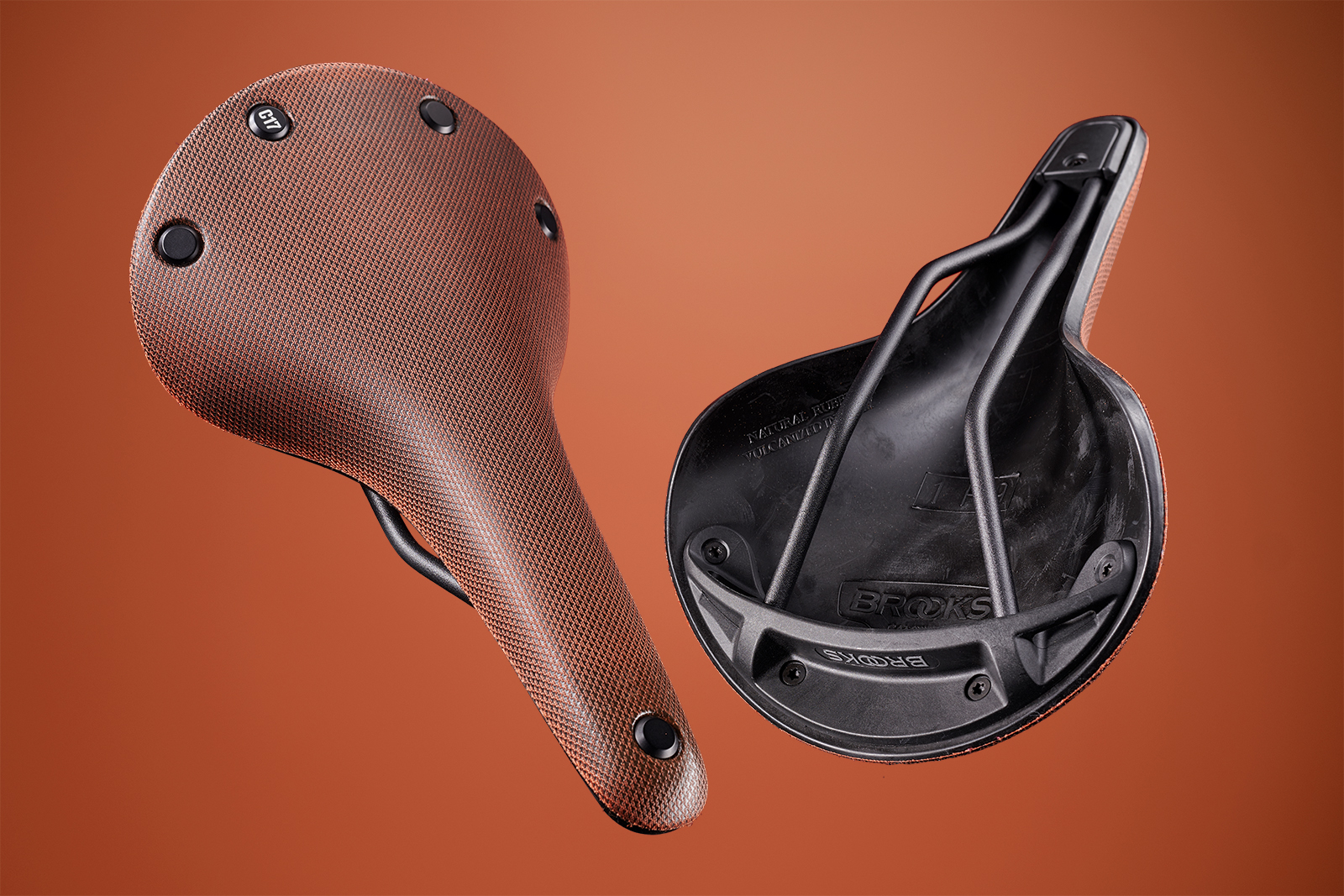
Hybrids are created with comfort in mind, so chances are you will get on with the saddle that is fitted on your hybrid. However, bear in mind that saddles are a very personal choice and one size definitely does not fit all.
Contrary to what you might think, lots of padding isn’t necessarily the best thing.
Ideally, when on the bike you should be supported by your sit bones. Excess padding can put pressure on your soft tissue, impeding blood supply and causing numbness – that’s particularly the case the longer you are riding.
The best thing to do is ask for expert advice in your local bike shop. You’ll often be able to try out some different saddles on your bike too, you just need to ask.
You can also find out more in our guide on how to choose a bike saddle and see some of the best in our lists of the best bike saddles and best women’s bike saddles.
Should my hybrid be steel, aluminium or carbon?
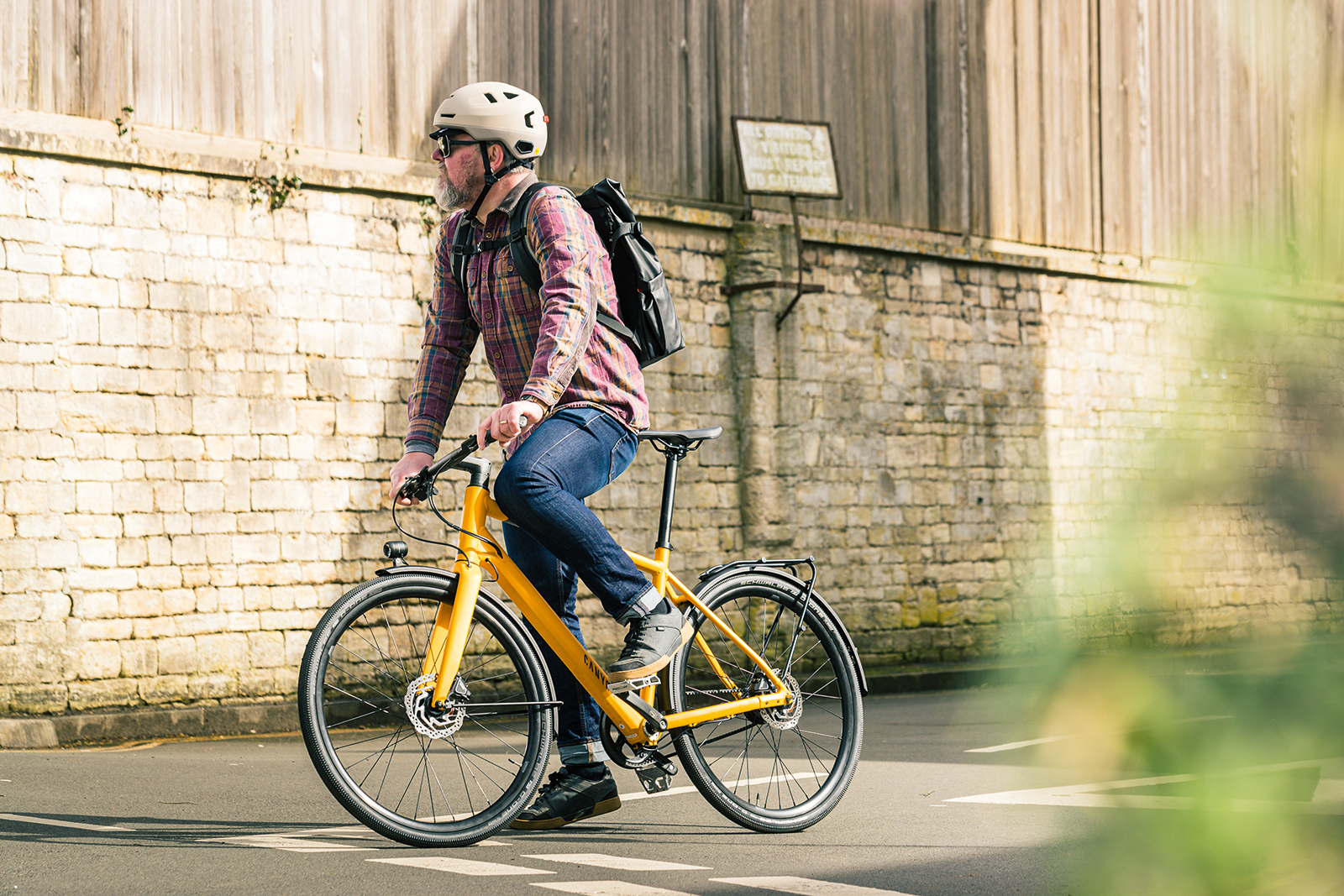
The vast majority of hybrid bike frames will be constructed from aluminium. This is an excellent choice, combining a competitive weight with relatively low cost.
Aluminium frames can be made to ride very well at a fraction of the cost of higher-end options and are often paired with a carbon fork for improving vibration absorption at the front.
The most expensive hybrids may come with a carbon frame, which can add further refinements to the ride with increased comfort at a lighter weight.
However, carbon fibre is expensive and does have to be treated with care. Unless you’re sure that you can lock up your bike in a safe and secure location, we’d generally recommend against carbon for an everyday bike that will be used and abused.
Steel frames are not widespread. While the material has many advantages, being incredibly durable (and some might say aesthetically pleasing), it is also comparatively heavy.
Our quick guide to frame materials explains more.
Accessories for hybrid bikes
The versatility of hybrids extends to the number of accessories that are either designed specifically to go with them or that can be added.
Mudguards

A large percentage of hybrid bikes come pre-fitted with mudguards, particularly those aimed at commuters or urban cyclists, who are likely to be using them in all weather conditions, including on wet roads.
If mudguards don’t come as standard, any good hybrid will feature mounting points on the frame that allow you to fit them. Check out our list of the best mudguards to make your bike weather-proof and keep you dry.
Bike racks

There should also be eyelets for fitting racks, allowing you to carry your luggage in panniers rather than using a heavy backpack. Should you prefer to keep things on your back, however, there are many quality commuter-specific backpacks to choose from.
Bike lights

The best bike lights for road cycling are a must for anyone riding after dark. We’d even recommend having lights throughout the day too for extra visibility.
Some hybrid bikes will arrive with lights already fitted. These are normally powered by a dynamo, which draws power from rider input rather than batteries.
Bike computer
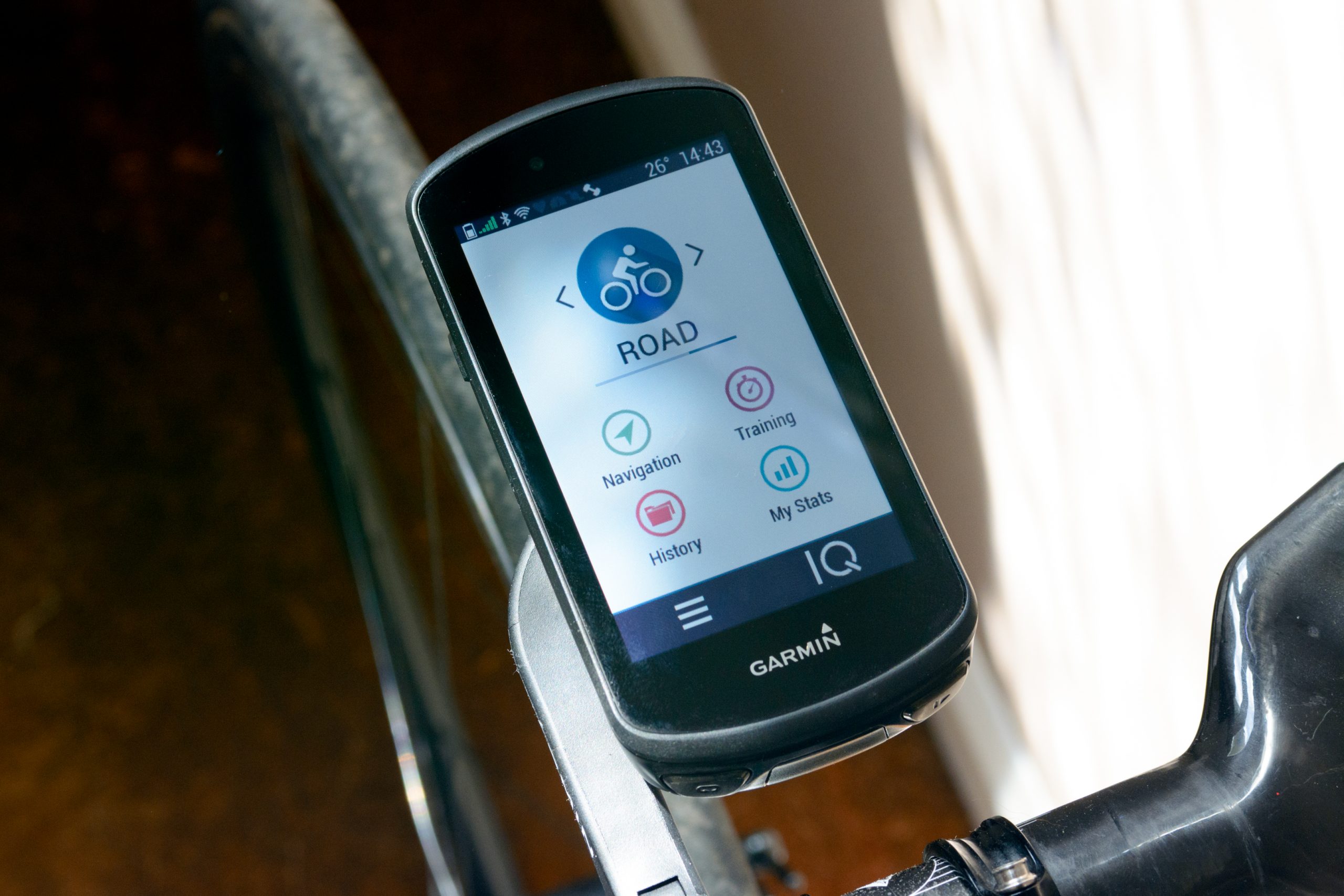
Bike computers are also handy. The simplest ones are great for keeping track of the miles you’ve covered and how long your journey has taken.
The best bike computers, such as those by Garmin, will also let you map and track your route.
Secure your bike

Wherever you park your bike, you’ll need a quality lock to deter thieves.
We tested 24 of the most popular bike locks to destruction, so you can secure your bike with the best protection available. We’ve also got tips on how to lock a bike.
It might also be worth insuring your bike so that you are covered if the worst happens and your ride gets stolen. Thankfully, we’ve put together a complete guide of what to look for when buying bicycle insurance.
Finally, if you’re thinking about anything other than a hybrid bike, why not check out our complete guide to the best bikes for cycle commuting.